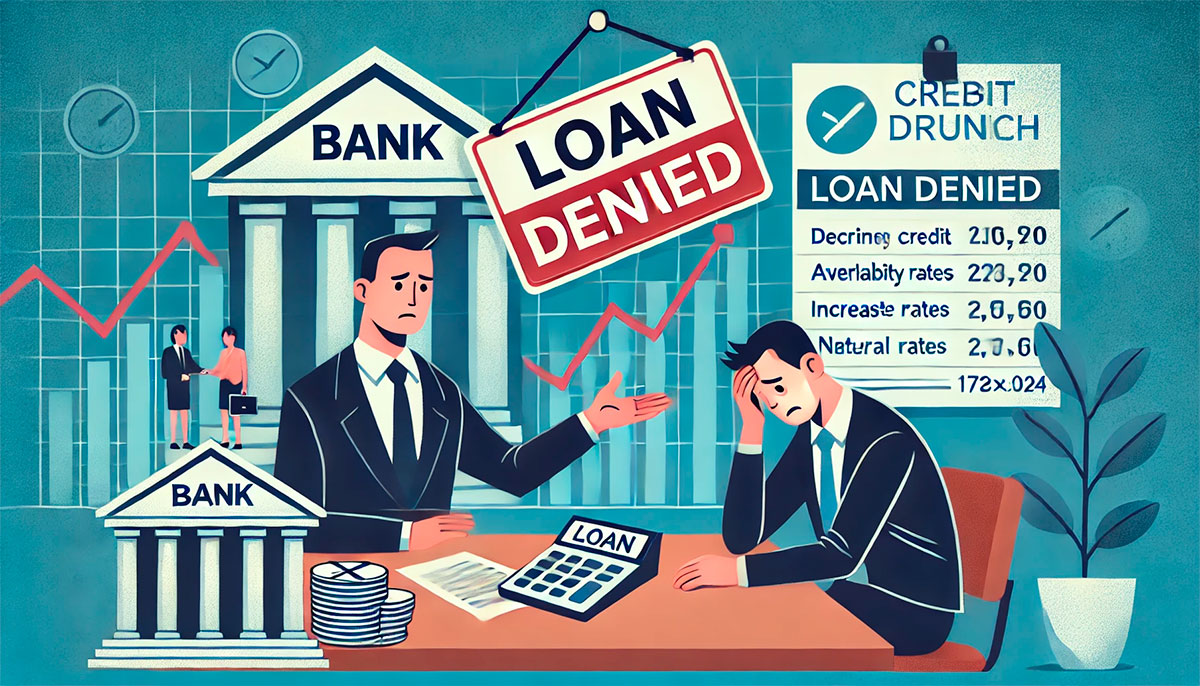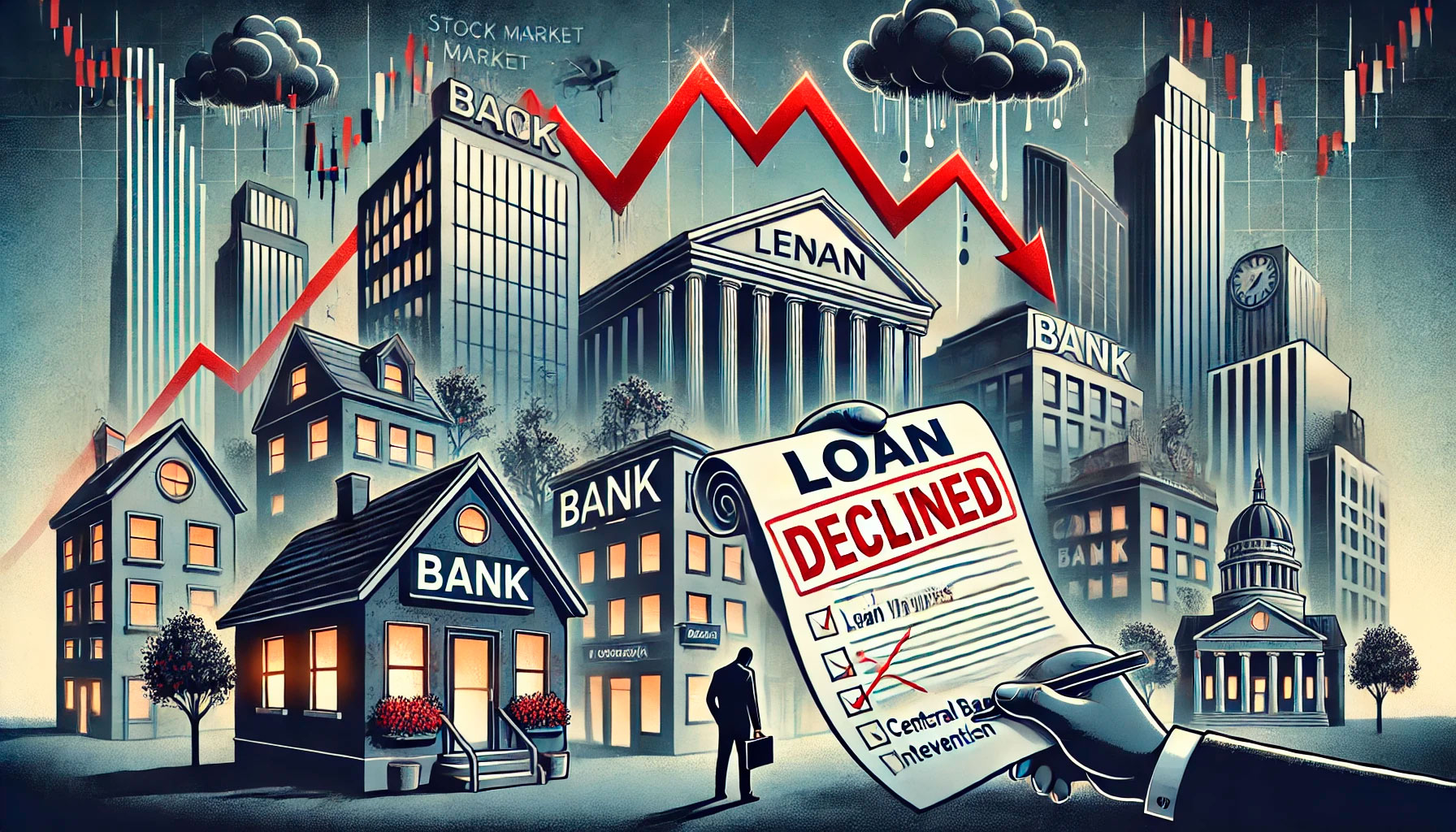Global financial crises have far-reaching effects on economies around the world, disrupting financial markets, businesses, and everyday consumers. These crises are often characterized by widespread uncertainty, falling asset values, and credit tightening, and they can have a profound impact on lending markets. Lending markets, which involve the borrowing and lending of money between institutions, businesses, and individuals, are particularly sensitive to global financial instability. During a financial crisis, the availability of credit and the terms under which loans are offered often change dramatically. In this article, we will explore how global financial crises affect lending markets, the mechanisms behind these changes, and the consequences for borrowers and lenders alike.
What Happens to Lending Markets During a Financial Crisis?
During a global financial crisis, lending markets experience significant disruptions. These disruptions typically stem from a combination of factors, including a loss of confidence in financial institutions, a rise in default risks, and a sharp contraction in economic activity. As a result, banks and other financial institutions become more cautious about lending, leading to a tightening of credit. This means that it becomes harder for borrowers to secure loans, and those who can still obtain credit often face higher interest rates and stricter lending conditions.
One of the most immediate impacts of a financial crisis on lending markets is a reduction in the supply of credit. When banks face losses, whether due to bad loans, collapsing asset values, or other financial shocks, they often respond by reducing the amount of credit they extend. This occurs because banks need to preserve capital and manage risk during uncertain times. The result is a decrease in the availability of loans for consumers and businesses, which can further exacerbate economic downturns by reducing spending and investment.
The Credit Crunch: Reduced Access to Loans
One of the key features of a financial crisis is the so-called “credit crunch,” where the availability of credit shrinks sharply. During a crisis, banks and financial institutions typically face an increase in non-performing loans, which are loans that borrowers fail to repay. This increases the perceived risk in lending markets, leading banks to become more selective in their lending practices. As a result, businesses, especially small and medium-sized enterprises (SMEs), often find it more difficult to secure financing for expansion or even day-to-day operations.
For individuals, a credit crunch means higher borrowing costs and reduced access to mortgages, personal loans, and credit cards. Lenders may raise interest rates to compensate for the higher risk, or they may tighten credit standards, making it more difficult for individuals with lower credit scores or smaller incomes to qualify for loans. In some cases, lenders may even stop offering certain types of loans entirely, further limiting access to credit during a crisis.
The reduction in lending can create a vicious cycle, as businesses and consumers are unable to borrow money, leading to reduced spending, investment, and economic growth. This can prolong or deepen the effects of the crisis, leading to a broader economic recession or even a depression.
The Role of Central Banks in Supporting Lending
During financial crises, central banks play a crucial role in maintaining stability in lending markets. One of the primary tools central banks use to address disruptions in lending is monetary policy. By adjusting interest rates, central banks can influence borrowing costs for banks and consumers. In times of crisis, central banks often lower interest rates to make borrowing cheaper and stimulate lending activity. Lower interest rates help increase the availability of credit, making it more affordable for businesses and consumers to borrow money, which can help counteract the contraction in lending caused by the crisis.
In addition to lowering interest rates, central banks may also use other policy tools, such as quantitative easing (QE), to inject liquidity into the financial system. Through QE, central banks purchase government bonds or other assets from banks, which helps increase the amount of money circulating in the economy and encourages banks to lend more. This is particularly important during a financial crisis, as it helps ensure that banks have the necessary funds to lend to consumers and businesses, thus maintaining credit flow and supporting economic recovery.

The Impact on Borrowing Costs and Loan Terms
During a global financial crisis, borrowers typically face higher interest rates and more stringent loan terms. Banks raise interest rates to offset the increased risk of lending, and they may also impose stricter credit requirements, such as higher credit scores or larger down payments. The higher borrowing costs make it more expensive for businesses to finance new investments or for consumers to take out loans for big-ticket purchases like homes or cars.
In addition to higher interest rates, borrowers may find that they are offered loans with shorter terms or lower loan amounts. For example, a borrower who might normally qualify for a 30-year mortgage may find that only a 15-year mortgage is available during a crisis, with a significantly higher monthly payment. Similarly, businesses that previously had access to large credit lines may face restrictions on the amounts they can borrow or be asked to provide additional collateral to secure the loan. This tightening of loan terms further limits economic activity by making it more difficult for businesses to grow or for consumers to make significant purchases.
Government Intervention and Loan Guarantee Programs
To mitigate the effects of a financial crisis on lending markets, governments may introduce loan guarantee programs or direct interventions to encourage banks to continue lending. During crises like the 2008 global financial meltdown or the COVID-19 pandemic, governments often introduce measures that provide financial institutions with incentives to lend to businesses and consumers who might otherwise be unable to obtain credit due to the increased risks associated with the crisis.
For instance, government-backed loan guarantee programs can help reduce the risk that banks face when lending to businesses or individuals. These programs typically offer a government guarantee on a portion of the loan, which reduces the risk to lenders and encourages them to extend credit. In turn, this helps maintain the flow of credit into the economy, supporting businesses that need funding to survive and households that require loans to make major purchases or manage financial stress.
In addition to loan guarantees, governments may also provide direct funding to struggling sectors of the economy, such as small businesses or the housing market, to ensure that credit continues to flow. These interventions can help stabilize lending markets and ensure that businesses and individuals are able to access the capital they need to weather the crisis.
Long-Term Effects of Financial Crises on Lending Markets
While the immediate effects of a global financial crisis on lending markets are typically characterized by a sharp contraction in credit, the long-term effects can be more nuanced. After a crisis, lending markets often remain cautious for an extended period of time, even after economic conditions begin to stabilize. Banks may continue to operate with stricter lending standards, and borrowers may face higher interest rates for years to come as banks seek to recoup the losses they experienced during the crisis.
Additionally, financial crises often lead to structural changes in lending markets. For example, the 2008 financial crisis resulted in significant regulatory changes, such as the implementation of stricter capital requirements for banks under the Basel III framework. These changes were designed to reduce the risk of future financial crises but also contributed to a more cautious lending environment in the years following the crisis.
Similarly, the COVID-19 pandemic caused widespread disruption to lending markets, but it also accelerated the shift toward digital banking and online lending platforms. As banks and financial institutions adapted to new conditions, many turned to technology to streamline lending processes and offer more flexible loan products. This shift is likely to have lasting effects on the lending industry, with digital lending platforms becoming a more prominent feature of the post-crisis lending landscape.
Global financial crises have profound effects on lending markets, typically resulting in a reduction in the availability of credit, higher borrowing costs, and stricter loan terms. The disruption of lending markets during a crisis is driven by a combination of increased risk, reduced confidence, and the need for financial institutions to preserve capital. However, central banks, government interventions, and changes in lending practices can help mitigate some of these effects. While the immediate impacts are often negative, the long-term effects of financial crises can lead to structural changes in lending markets that reshape the borrowing and lending landscape. Borrowers, businesses, and financial institutions must adapt to these changes to navigate the challenges of post-crisis lending environments.



